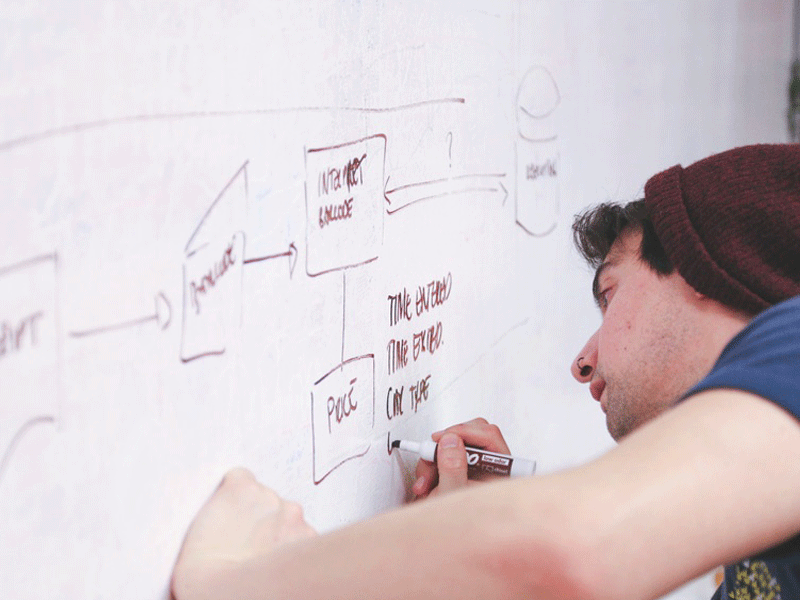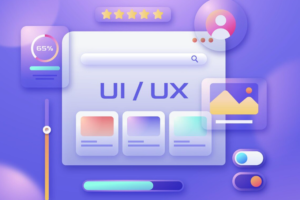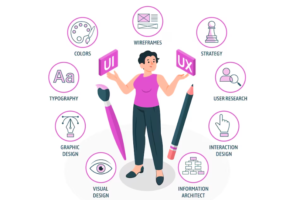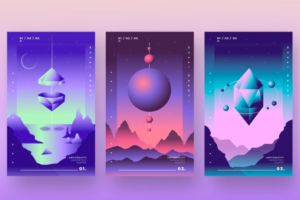Any new product is conceptualized when we encounter a problem that does not have a best possible solution in the market. The idea behind a new product develops when an intelligent mind realizes that there is a need to fill the gap between available solutions and consumer requirements. However, from idea to product development is a journey that involves multiple roles and phases. There is a widely common misconception that all you need to do is hire a product designer to design a product, and that’s all!
Product designer role definitely involves designing the product, that is, the aesthetics of the product. However, limiting the role of a product designer only to create the look and feel of the end product is absolutely wrong. There are many roles and responsibilities that fall under the category of a product designer and the interesting fact is that these roles are mostly performed by multiple people who fall under different job categories. Let’s have a look at the different categories and their jobs to have a better understanding of product design:
UX/ Interaction Designer
This person assesses the usability of the product and finds out if it will be useful for the end user. User experience designer analyzes the product idea with customer in mind and ensures that the solution offered to the customer produces immediate positive emotions.
UX Researcher
This role may overlap and submerge with UX designers’ role and can also be a separate role depending upon the complexity of the product. Certain product designs may need an individual researcher to observe and assess user behavior based on various methodologies. The researcher role stretches to every phase of the product design as every phase needs to be assessed and matched with user expectations.
UI/ Graphic Designer
User interface compliments the user experience results. While user experience discovers the best way to present the solution, user interface provides the look and feel of the product. The graphics are designed via storyboards and developed in terms of shapes, colors and designs that are pleasing to the eye and work well around the structure that provides functionality. These designs may be static or animated; it depends on the product and the user expectations. Once the product has been designed, the graphic designer will then have to consider packaging. From finding the correct shape and size box to creating a custom label design, there are many things involved when it comes to package design. Once this step is complete, it’s time to make a prototype!
UX Prototypes
The main job of this person is to create a mock-up or a simulation of the final product. The prototype is used to check smooth flow and consistency. It saves a lot of time in fixing errors in the final product. Prototypes can be high fidelity or low fidelity depending upon the product designer’s method of developing the prototype. The purpose of creating the prototype defines its fidelity level.
Data Analysts and Testers
It is vital to check the product at various levels of design and development using scientific and data driven methods. This will ensure that the solution in making will be accepted and used by the customer as expected. This involves huge amounts of data gathered by different sources such as customer behavior, industry market value, etc.
Product design involves all the above roles and mostly these responsibilities are performed by more than one person although in most companies these roles do overlap. As the technologies and platforms keep changing, the product designer needs to evolve and upgrade continually in order to stay competitive. The solutions designed by the product designer should not only solve the current problem that originated the idea but the solution should also be future proof to accommodate any changes. These changes may be an increase in the number of customers, the change in technology or platform or general modifications such as additional features, as the product grows with time.
The solutions designed by the product designer should not only solve the current problem that originated the idea but the solution should also be future proof to accommodate any changes.
If you are tech savvy and understand the product design and its intricacies, then you may already beware of the above role descriptions. However, for someone new to the industry, it is quite a revelation to learn that a product designer does so much more than creating a beautiful design for a product. To understand the product design in-depth, here is a break-up of various stages. There are many explanations and arguments among technology masters as to any definite set of phases in product design. Below is our effort to throw some light on the matter based on our experience and knowledge:
Idea
Most ideas spring as a result of dissatisfaction from a certain service or product. Your idea to create a product that will be better than the existing one or would solve a certain problem is the first and most monumental stage of product design.
Research
Before jumping up and down with excitement about your great idea, it is wise to do a bit of homework. You must research and find out if there are any existing similar products in the market. You don’t want to create a duplicate product and spend all your time, effort and money on something replicate. If there are similar products, use them and find the loopholes that you can fill and make a much better product.
Brainstorming
You have discovered the problem and researched to find out if there are any good solutions in the market. If you are still convinced that your idea is worth developing into a product, then you must start with a brainstorming session. Come up with multiple solutions to the original problem. Correlate and evaluate each idea to find the best fit and you might even come up with a rough sketch of the product.
Prototype
Develop a simulation of the product you have in mind to ensure it flows as smoothly as you imagined.
Aesthetics
Design graphics, add animation and design a presentable and attractive user interface for front-end user experience. It is similar to the product description and photos found on eCommerce platforms like Amazon. The brand registered users get access to an enhanced brand content feature (https://www.sunkenstone.com/blog/enhanced-brand-content/) that aligns with UX designs.
Testing
It is a very important step as it tests the design and functionality of the product and finds out of there is any errors. At this point in the process, you might want to research how consumers can enhance new product development. Before finalizing the design, several iterations of the prototype may be developed to reach the final design.
Once all the above stages are covered, you are finally ready for your product development and this is where marketing comes into play, whereby if it was a food product you would hire a company like Ceres PR for food marketing specialties or other companies for different products. Then it will be put to the masses to see if they enjoy your new product on the market.





